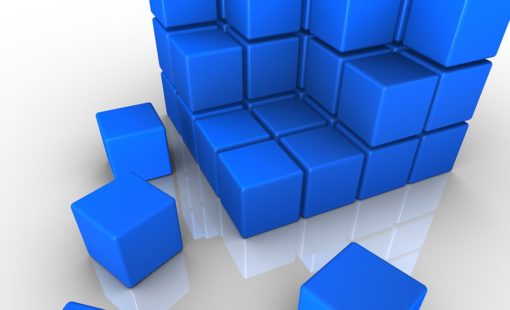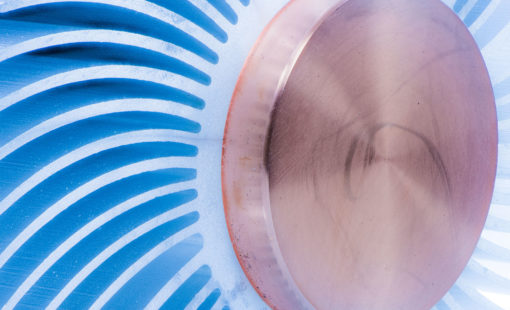
- Blog
Do you know what a »Yogi-ism« is? Yogi-ism goes back to the name of the late Yogi Berra (1925 – 2015), an American professional baseball catcher, who was an 18-time All-Star and won 10 World Series championships – more than any other player in MLB history. After his career as a player, he turned to coaching, where he became famous for his “impromptu pithy comments, malapropisms, and seemingly unintentional witticisms, known as Yogi-isms”

- Blog
Every day, more and more of our lives become connected with IoT technology. With billions of smart products already out there.

- Blog
Wussten Sie, dass der Ausdruck "Übersprechen" (engl. Crosstalk) aus der Zeit der Telefonzentralen stammt, in denen Mitarbeiter Anrufer miteinander verbunden haben, die manchmal ungewollt das Gespräch eines anderen hören konnten? Man sprach im wahrsten Sinne des Wortes über eine andere Leitung hinweg.

- Blog
In part 1 of this blog we took a back-to-basics approach and discussed line impedance and its effects in signal integrity. As every electrical conductor comprises capacitance, an inductance, and a frequency-dependent ohmic resistance, and with increasing frequencies, these electrical characteristics will influence and distort the signal.

- Blog
Impedance and impedance control belong to the oldest and most often discussed topics in PCB design. They are especially important with the high-speed design when related to signal integrity. In this, the first of a two-part blog, we’ll go back to the basics of impedance/impedance control and consider what influences line impedance. In part two, we’ll set about controlling it.

- Blog
It’s not often you spend your work day laughing AND learning. But that’s how it went for Zuken Europe’s first foray into filming videos with our customers.

- Blog
Demand for faster data speeds is increasing. Boards are becoming more dense. Requirements call for the latest protocols and devices. Packaging constraints call for multi-board and flex-board systems. The surest sign of escalating board complexity lies in the fact that few are designed by a single engineer. Today, most require the coordination of many engineers instead. And overall, this trend shows no sign of abating. Board complexity looks like it will only get worse...

- Blog
PCB designers working with advanced and complex designs are constantly pushing the boundaries to satisfy the signal integrity of routed differential pairs and busses. Those who work with flexible and flex-rigid PCB designs are perhaps the most demanding of all. A while ago, the introduction of the curved corner style for routing trunks in CADSTAR made a big difference to this group of users.

- Blog
It sounds like a paradox: electronics manufacturers can increase variation within a product line while using fewer electronic components. Reuse keeps product costs low, increases product flexibility and customization. Far from paradoxical, the approach is quite doable today through a process called modular board design coupled with predictive analysis numbers returned by the Internet of Things.

- Blog
It has often been noted that many of the aircraft and other weapons systems used by the armed forces are older than the service men and women operating and maintaining them. While the average age of a U.S. domestic commercial airliner is 11 years, it is not uncommon for aircraft to still be in service at 30 years. Likewise, there are many machines and systems in electric power generation, discrete parts manufacturing, chemical process, oil and gas production and many other industries that have been in continuous operation for several decades or longer.

- Blog
Japan is one of the first countries to face the combination of challenges such as energy issues, population decline and an aging society. Solving these problems with the benefit of the Internet of Things (IoT) could generate future business opportunities as well as meeting the demands of society. Enabling as many people as possible to try out new ideas, and encouraging them to develop diverse products, will broaden these opportunities. The Trillion-Node Engine is a platform for realizing this objective.

- Blog
Take a walk in the engineer’s shoes: I need an 80 MHZ network controller for my new project and I found one in the PLM/PDM system. That was easy. Now a quick check in the procurement database to do a price and availability check. So far so good, now on to the component engineering system to see if there are any possible lifecycle issues with a 10-year minimum requirement. It’s my lucky day, no issues and it’s a company-preferred part with an ECAD library instance.

- Blog
Using feedback from products in the field to continuously improve design modules used as the basis for product development can increase product performance and reliability and reduce development time.

- Blog
As we welcome increasing numbers of IoT devices into our industries, offices and home lives, we shouldn’t be surprised to see increasing electromagnetic (EM) congestion. Or, as it’s now dubbed, the ‘Interference of Things’.

- Blog
A customer recently asked me if CR-8000 Design Force could support stretchable flex designs. At first, I found the question odd, until they shared their intent: wearable electronics. The idea of wearable electronic products like head and wrist bands sparked an interesting conversation and piqued my interest.

- Blog
Man-carried military communication systems often consume large amounts of power. The heat must be removed from the electronics package to avoid frying sensitive electronic components. The package typically is designed to be carried in a backpack which often puts difficult constraints on the form factor and weight of the system